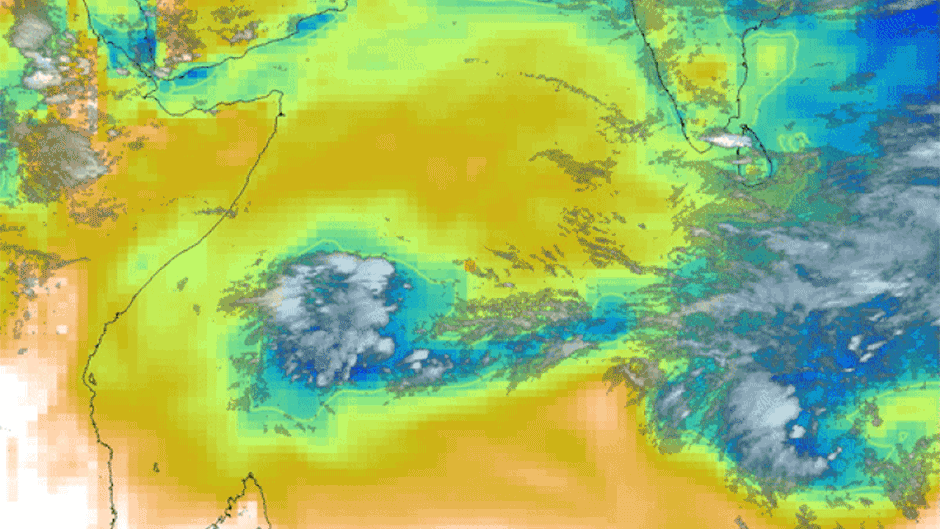The air-conditioned trailer provided a measure of relief from the heat and humidity of the Maldives, but it was not enough to make University of Miami atmospheric scientist Brian Mapes forget that temperatures outside were scorching.
He and a group of other researchers had been stationed on the southern Asian island nation for several weeks, poring over mounds of radar and satellite data to better understand how an eastward moving pulse of clouds; wind; and rain near the equator affects hurricanes, droughts, and other weather events all over the world.
But the long days of reviewing those figures on the dynamics of the climate phenomenon known as the Madden-Julian Oscillation were beginning to get a bit tedious, so that’s when Mapes got an idea.
“There I was sitting in a trailer under a blasting equatorial sun on an island in the Indian Ocean. Curiosity got the best of me, and I just started looking at blobs of water vapor that move to the west instead of the east,” he recalled.
What he discovered was a never-before-documented meteorological occurrence: streams of water vapor that pinch off from their source of origin, the Indo-Pacific, and then drift west toward the east coast of Africa, bringing much-needed rain to that part of the continent.
Mapes, a professor at the University of Miami Rosenstiel School of Marine and Atmospheric Science, dubbed these compact pools of water atmospheric lakes, calling them “natural laboratories of how clouds and vapor cooperate in the atmosphere, a process we don’t entirely understand.”
Unlike fast-moving atmospheric rivers—long, narrow filaments of wind that bring tropical moisture to the midlatitudes, often producing extreme rainfall—atmospheric lakes are smaller and float along coastal regions near the equator in areas where average wind speeds are near zero.
“They’re not stormy in the sense of being windy, but they’re stormy in the sense of being full of clouds and rain,” Mapes explained. “And because they last so long, we can deduce that they import just exactly the same amount of vapor as they rain out.”
Using five years of satellite data, Mapes identified 17 atmospheric lakes that lasted longer than six days, and all were within 10 degrees of the equator. “More cases occur off the equator, where they sometimes spawn tropical cyclones,” Mapes pointed out.
If all the water vapor in an atmospheric lake were liquified, it would produce a pool only a couple inches deep but about 620 miles wide. “So, they bring life-giving rains to a very arid region of Africa,” Mapes said.
As much as he already knows about atmospheric lakes, Mapes is currently leading a study to learn more, such as why they break off from their point of origin, whether they are self-propelled or driven by larger wind patterns, and to what extent climate change affects them.
Without satellites, scientists probably wouldn’t know that they existed, according to Mapes. “The western Indian Ocean, east of Africa, is a rarely studied area for meteorological phenomena. And before satellites, it was difficult to know that these things were out there over the ocean,” he said. “Atmospheric lakes are not windy disturbances. They’re not like hurricanes or tropical cyclones where ships would notice the strong winds. It’s just that the vapor would build up and then come ashore.”
Mapes has already presented what he knows about atmospheric lakes at the 2021 fall meeting of the American Geophysical Union.
He grew up in Boulder, Colorado, sometimes looking out his bedroom window toward the mesa across town where the National Center for Atmospheric Research is located. “I guess that’s where my interest in atmospheric science started. When I was in grade school, we’d go to the center on field trips,” Mapes noted.
Like his curiosity about science that began as a little boy, Mapes said he is looking forward to widening the knowledge about atmospheric lakes.

